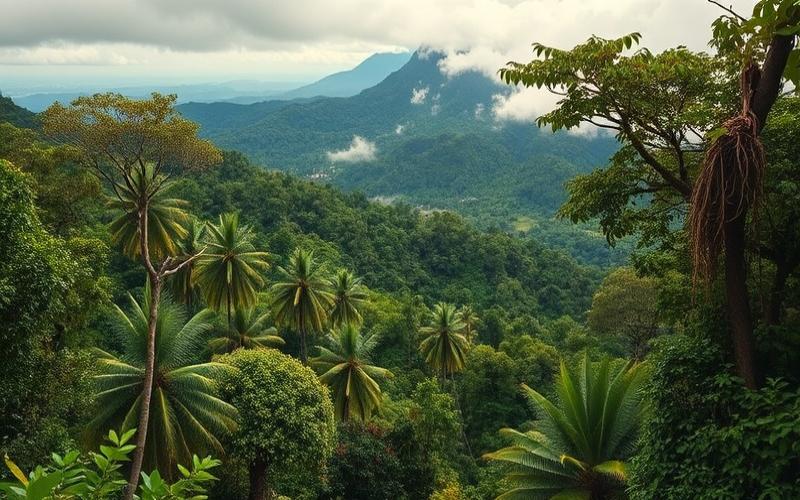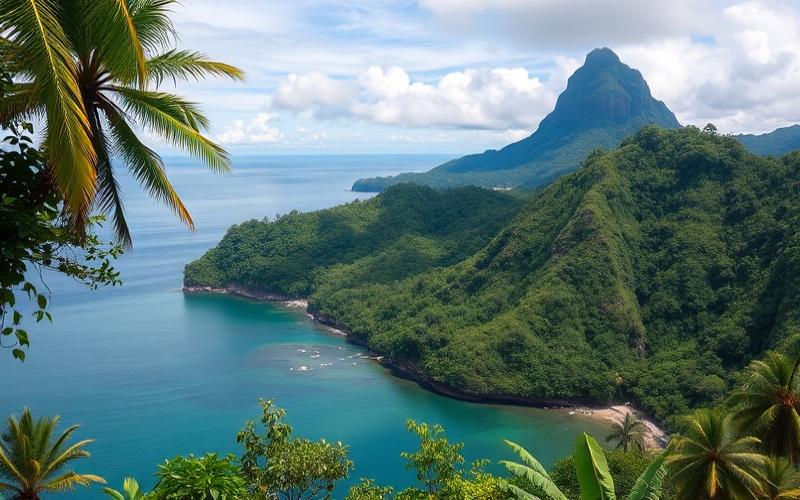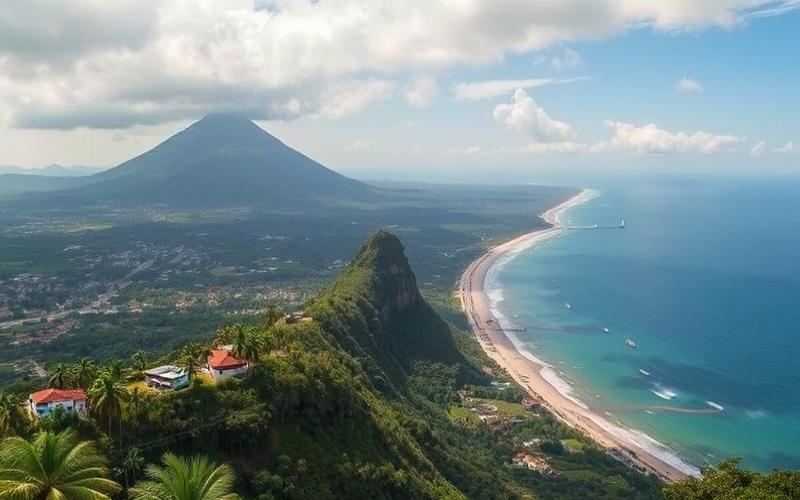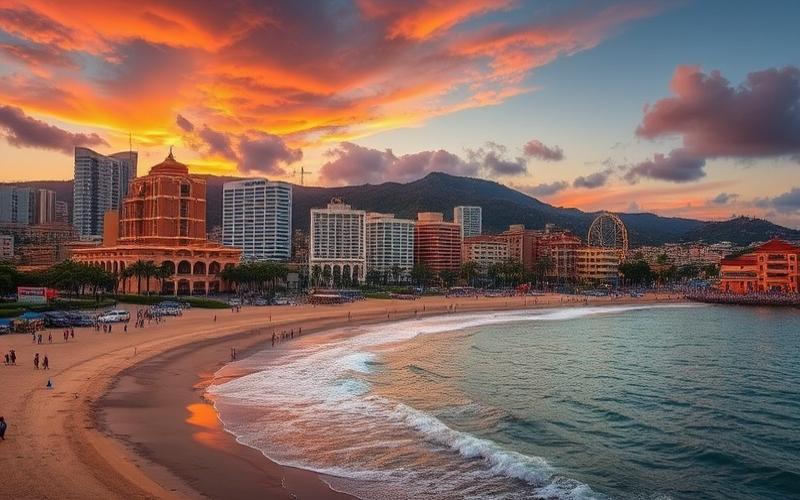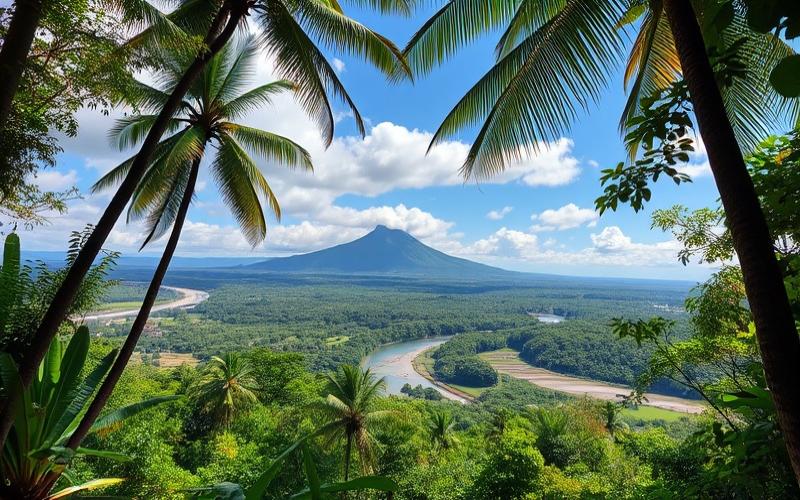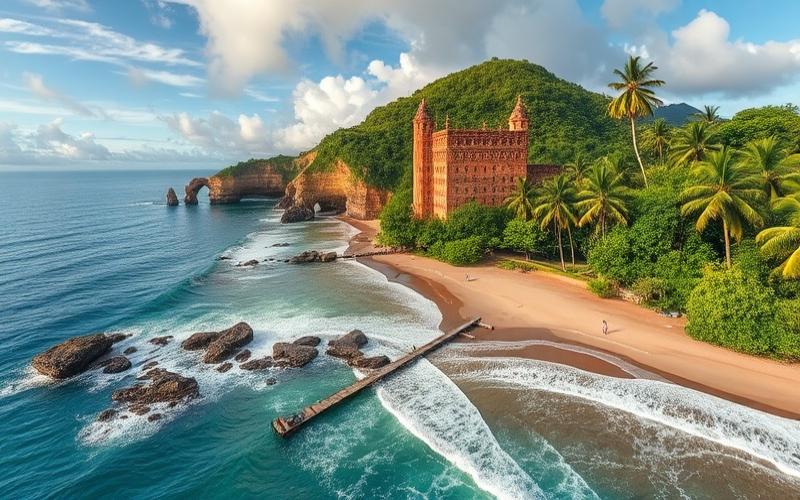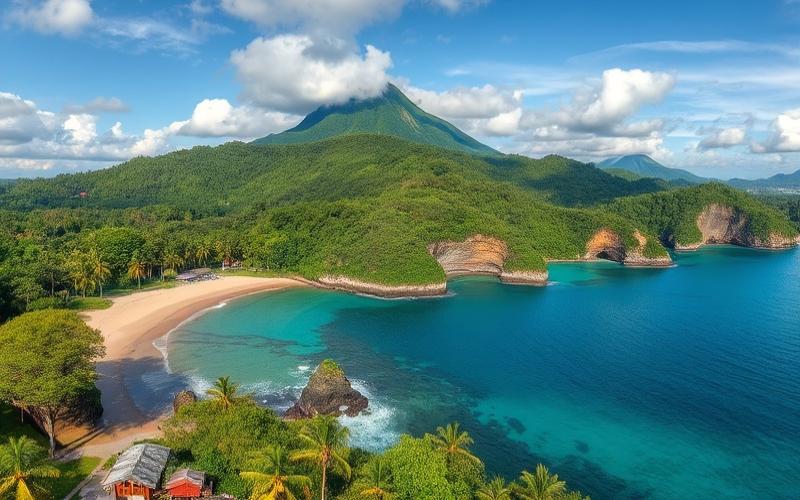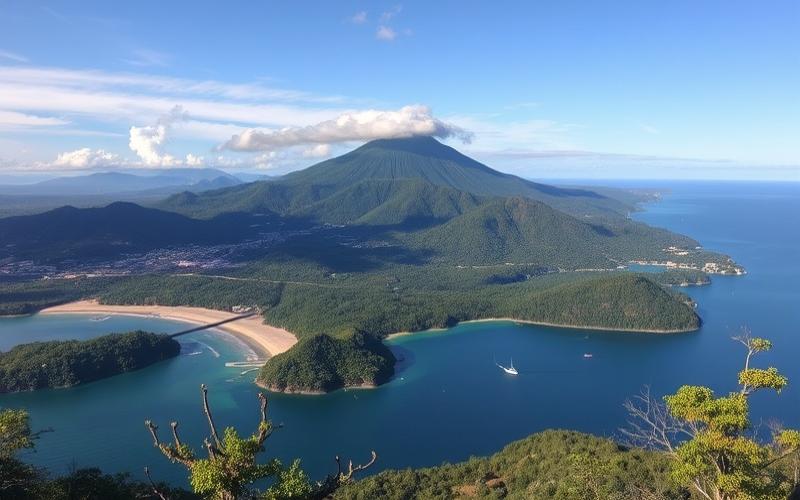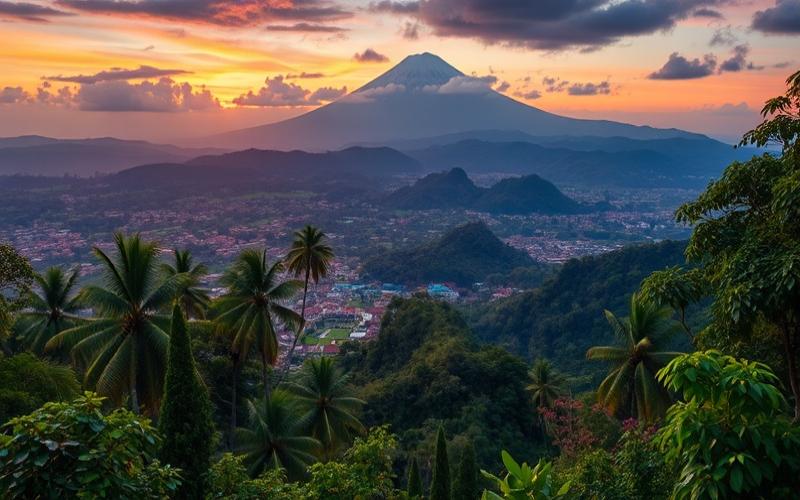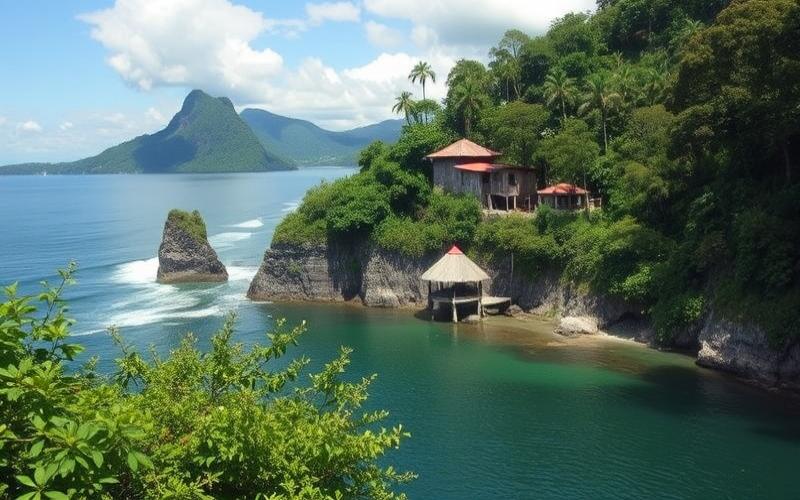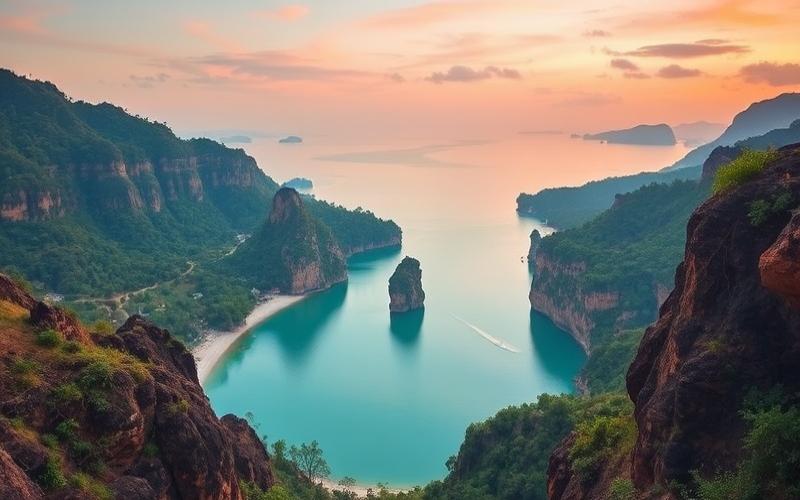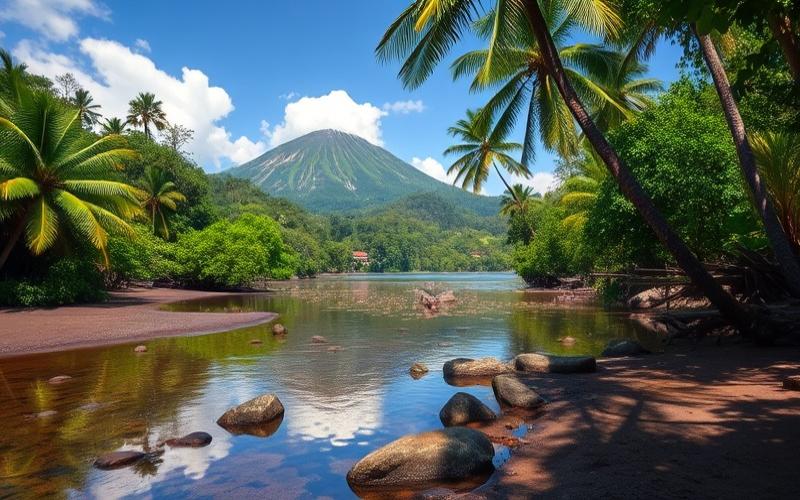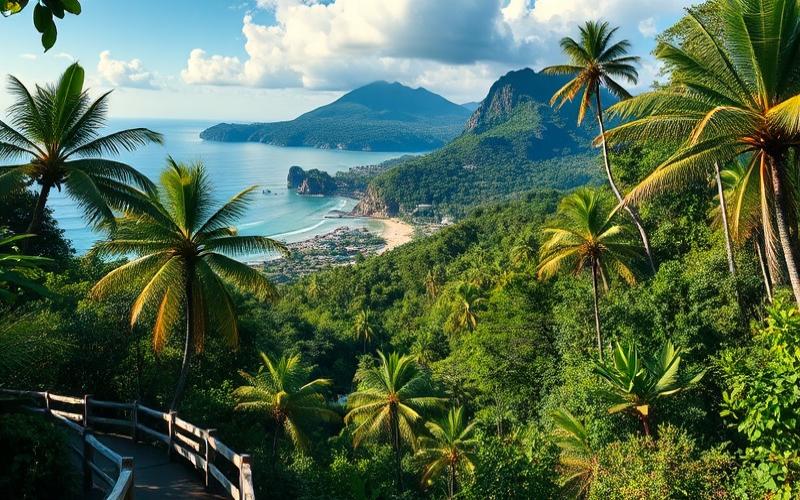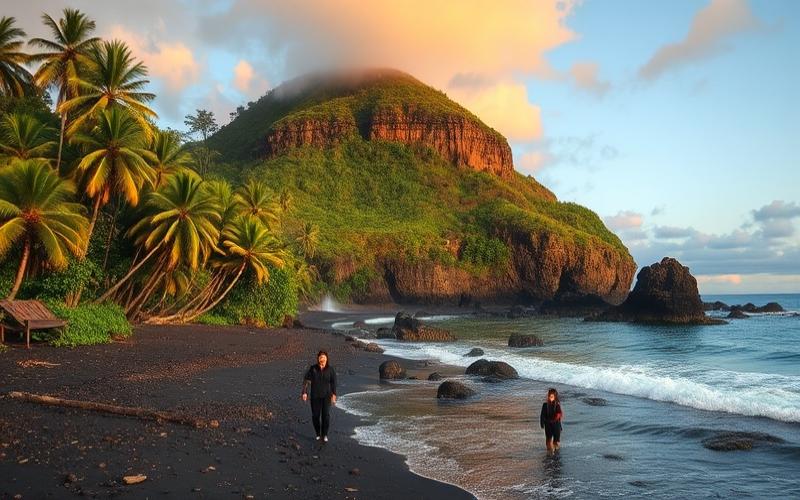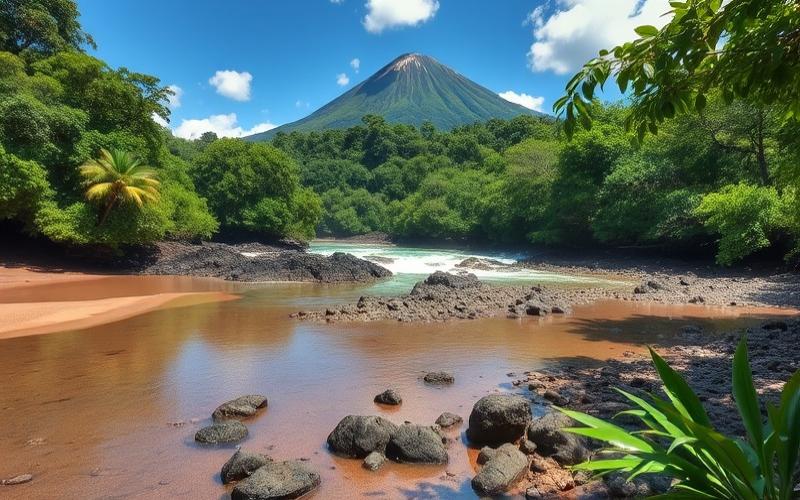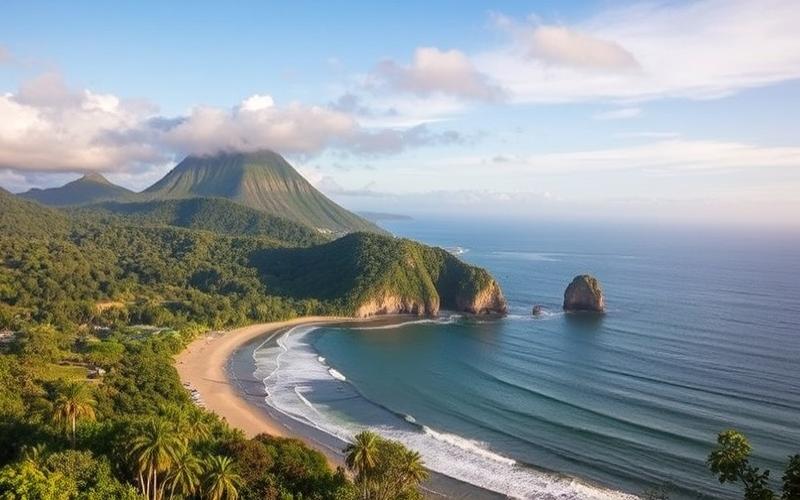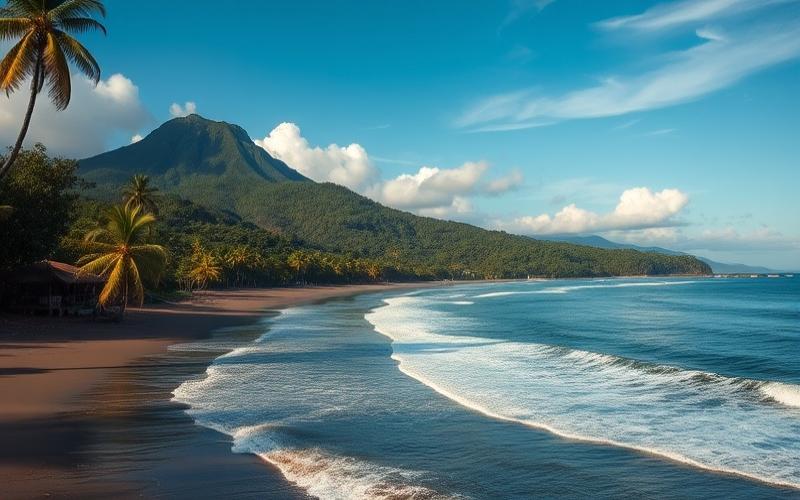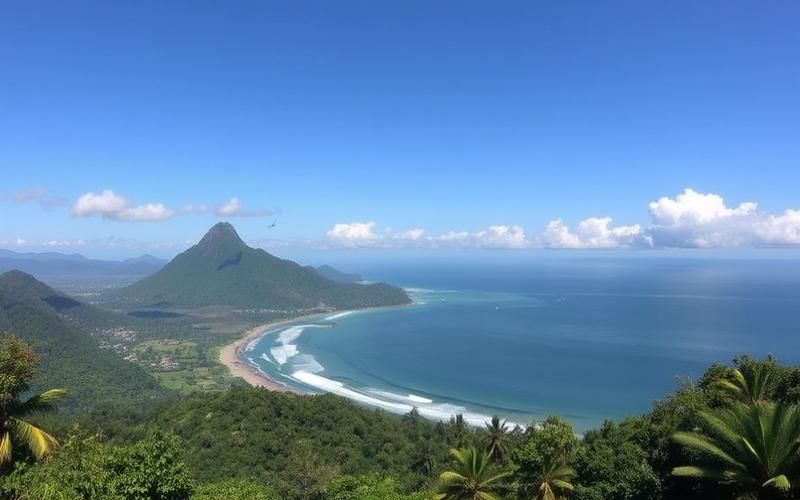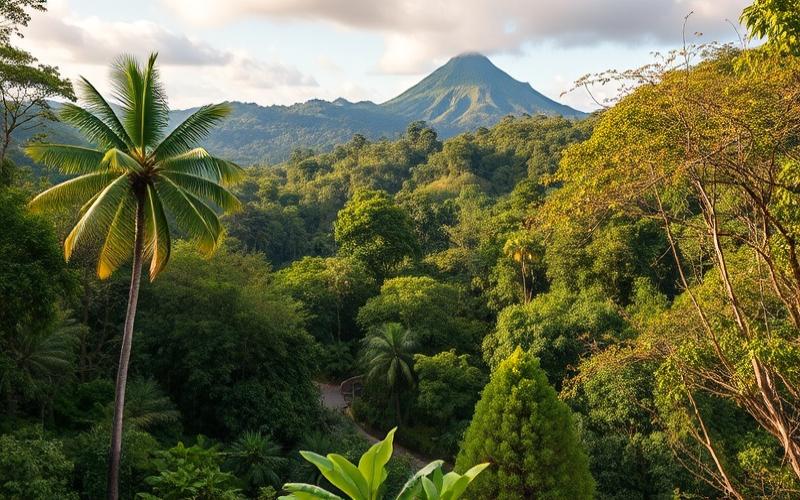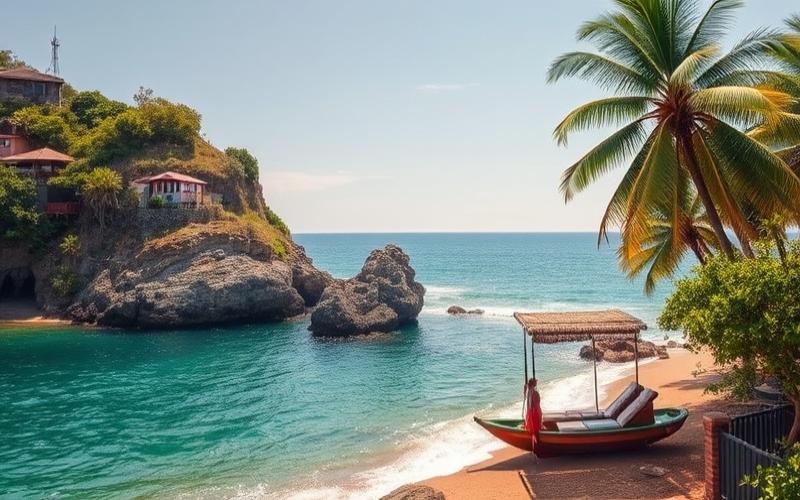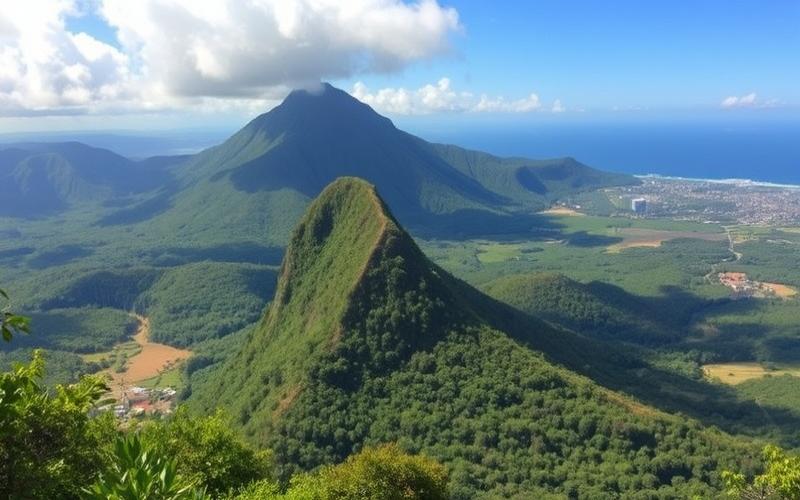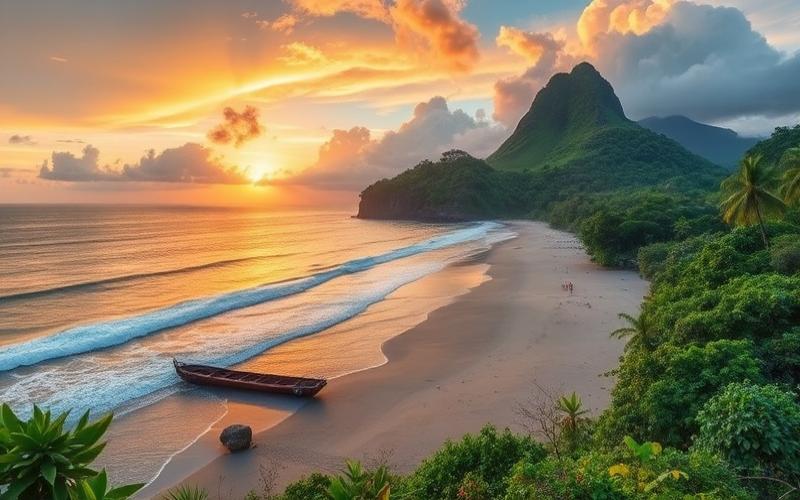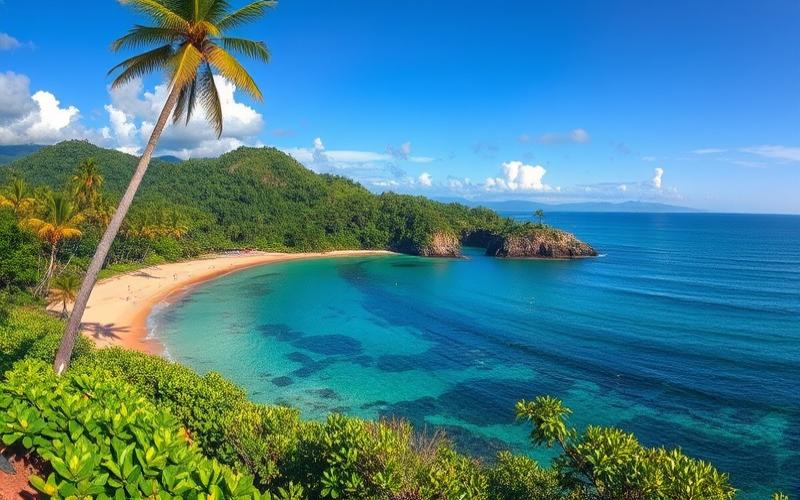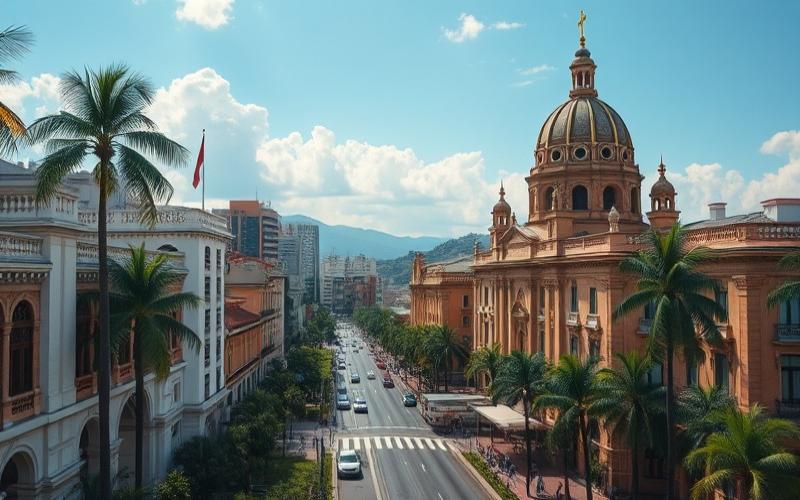
 Published on and written by Cyril Jarnias
Published on and written by Cyril Jarnias
Costa Rica’s Real Estate Price Surge by 2030
As Costa Rica continues to capture global attention with its exceptional biodiversity, picturesque beaches, and economic stability, a notable phenomenon is gaining momentum: the projected surge in real estate prices in key cities by 2030.
As green economy initiatives and sustainability efforts gain traction, several locations are seeing their appeal rise, leading to an inevitable increase in demand and, consequently, market prices.
In this article, we’ll explore promising Costa Rican destinations where this price explosion could transform the economic and social landscape by the next decade, highlighting both challenges and opportunities for investors and local residents.
Good to Know:
Costa Rica is recognized as one of the most stable and prosperous countries in Central America, with a strong commitment to environmental protection and renewable energy.
Promising Costa Rican Cities for Real Estate
Costa Rica Real Estate Market Trends Analysis (2025-2030)
The Costa Rican real estate market shows varied dynamics in 2025, but several regions stand out for their growth potential by 2030. This evolution is supported by economic, demographic, and tourism factors, along with massive infrastructure investments and growing appeal among expatriates.
Factors Influencing Real Estate Price Increases
- Population Growth and Expatriate Influx
The population continues to grow, fueled by steady flows of tourists and expatriates, particularly in coastal and urban areas. Incentive laws (digital nomad visa, tax exemptions for retirees) reinforce this trend. - Infrastructure Development
New road projects in the southern region, airport expansions (particularly in Liberia and San José), and improved internet connectivity (fiber optics) are making previously isolated areas much more attractive. - Economic Dynamism and Employment
The economy remains stable, with growing technology and service sectors (especially in the Central Valley/San José), while tourism creates job opportunities in hospitality, restaurants, and seasonal rentals. - Foreign Investment
Foreign buyers, primarily from North America and Europe, represent a growing share of transactions, stimulating demand and price evolution. - Tourism Appeal
Cities near beaches, natural parks, or with sought-after microclimates continue to attract investors focused on high-yield seasonal rentals (6-10% net annual returns in major tourist areas).
Promising Cities and Price Increase Prospects
| City | Main Assets | Projects/Infrastructure | Projections/Prices & Demand |
|---|---|---|---|
| San José | Economic and cultural capital, technology hub, quality healthcare and education services | Airport expansion, new residential neighborhoods, widespread fiber optics | Strong urban demand, price growth expected with skilled job growth and expatriate influx |
| Tamarindo | Renowned beach, surfing, nightlife, international community | Improved road access, new residential complexes, international schools | Growing demand for short-term rentals, price increases driven by tourism and digital nomads |
| Jacó | Proximity to capital, surfing, popular beach resort | Hotel development, urban security improvements, new roads | Major tourism investments, rising prices with increased foreign investment |
| Liberia | Gateway to Guanacaste, international airport, rapid growth | Airport expansion, shopping centers, new subdivisions | Strong increase in residential and tourism demand, rapid real estate price progression |
Notable Trends and Projections for 2025-2030
- General price increases expected in the most attractive urban and coastal areas.
- Longer sales timelines and increased inventory in some segments (traditional houses), but accelerated activity for land and development projects.
- Beachfront condos remain popular for their rental profitability and easy maintenance.
- Investments in agriculture (Nicoya, southern zone) and ecotourism (ecovillas, sustainable projects) are gaining popularity.
- The luxury market remains particularly strong in sought-after areas like Nosara, Papagayo, Escazú.
Statistics and Projections
| Segment | Median Price 2025 | Annual Variation | 2030 Outlook |
|---|---|---|---|
| Houses | $642,238 | -25.31% | Gradual recovery expected, especially in urban areas |
| Condos | $432,209 | -6.78% | Recovery anticipated, strong demand in beachfront areas |
| Rental Yield | 6-10% | Stable | Yield maintenance in tourist areas |
Elements to Monitor
- Legal complexity (property titles, maritime zones) requires vigilance.
- USD/CRC exchange rate evolution and potential tax reforms could impact profitability.
- Environmental risks (flooding, resource pressure) must be integrated into any investment strategy.
San José, Tamarindo, Jacó, and Liberia position themselves as Costa Rica’s most promising cities for significant real estate price increases by 2030, driven by infrastructure improvements, expatriate influx, tourism dynamism, and growing foreign investments. Opportunities are particularly marked for properties suited to seasonal rentals, beachfront condos, and sustainable projects, within a context of population growth and rapidly evolving lifestyles.
Good to Know:
San José, Costa Rica’s capital, benefits from rapid urbanization and massive infrastructure investments, attracting numerous foreign professionals, making it a key location for real estate investors. Tamarindo, with its growing tourist appeal, particularly for surf and beach enthusiasts, sees its hotel development projects multiplying, directly influencing real estate price increases. In Jacó, rapid infrastructure evolution and commercial growth attract a growing active population, reinforcing housing demand. Finally, Liberia, thanks to the Daniel Oduber Quirós International Airport and its role as gateway to Guanacaste’s beaches, experiences significant foreign investment growth, stimulated by the region’s economic and cultural potential. Projections towards 2030 suggest notable real estate price increases in these cities, with favorable economic and demographic factors supporting this trend, such as local job growth and increased foreign direct investment (FDI) levels.
Long-Term Investment Opportunities in Costa Rica
Economic Factors Making Costa Rica Attractive to Investors:
- Political Stability: Costa Rica stands out with a stable democratic system and long tradition of peaceful governance, reducing political risk for investors.
- Solid Economic Growth: GDP is projected to rise 4.2% for 2025, supported by tourism, technology, and innovation.
- Government Incentives: The country offers tax incentives, particularly in free zones and for investments in strategic sectors like technology and renewable energy.
- Emerging Infrastructure: Continuous infrastructure development, particularly in transportation, telecommunications, and ports, facilitating growth in real estate and commercial investments.
- Sustainability Focus: 99% of electricity generated from renewable sources and national policies favoring innovation and sustainability.
Examples of Cities/Regions with High Real Estate Appreciation Potential by 2030:
| Region/City | Promising Sector | Investment Opportunity |
|---|---|---|
| Guanacaste (Playa Flamingo, Tamarindo) | Tourism, hotels, second homes | Hotel complex construction, ocean-view land purchases, luxury villas |
| San José and Surroundings | Technology, services, logistics | Office development, coworking spaces, expatriate residences, free zones |
| Osa Peninsula, Southern Zone | Ecotourism, renewable energy | Eco-lodges, conservation projects, organic agriculture |
| Monteverde, Manuel Antonio | Adventure tourism, ecotourism | Lodges, activity agencies, wellness centers |
Dynamic Sectors Fueling Growth:
- Tourism: Continuous growth with over 3.5 million visitors/year, vacation rental expansion, rising prices in coastal and adventure areas.
- Information Technology: Development of technology parks and free zones around San José and Heredia, attracting multinationals and startups.
- Renewable Energy: Hydroelectric, solar, and wind projects, opportunities in green infrastructure construction and operation.
Potential Risks and Demographic Trends:
- Market saturation in some tourist areas, which may affect rental yields.
- Strict environmental regulations potentially slowing or complicating real estate projects, particularly in coastal or protected zones.
- Dependence on international tourism exposing the market to global economic fluctuations.
- Aging local population and increasing arrival of retirees and digital nomads, creating new needs for adapted services and housing.
Regulatory Frameworks and Environmental Policies Influencing Investment:
- Real Estate Regulation: Foreigners can acquire real estate with same rights as citizens, except for maritime zone concessions (limited to 20-year renewable terms, specific restrictions).
- Taxation: Low property tax (approximately 0.25% of cadastral value), but vigilance required for short-term rental taxes and capital gains on real estate.
- Environmental Policies: All construction subject to environmental impact studies, with restrictions in national parks, protected areas, and coastal zones.
- Zoning and Permits: Essential verification of permitted uses (zoning), water availability, and compliance with sustainable development standards.
Costa Rica attracts long-term investors through its stability, green policies, and incentives, but success will depend on judicious sector and region selection, along with perfect understanding of regulatory and environmental frameworks.
Good to Know:
Costa Rica offers long-term investment opportunities thanks to its political stability and favorable government incentives. Emerging infrastructure, particularly in regions like Guanacaste and the Central Valley, stimulates real estate price growth, especially in tourism, information technology, and renewable energy sectors. The city of Liberia in Guanacaste, for example, benefits from an international airport, making it attractive for tourism developments. However, investors must consider risks related to demographic trends, such as population aging, and the country’s strict environmental policies, which can influence land availability. The regulatory framework, favoring sustainability, may also impact development timelines but contributes to preserving natural wealth, an asset for ecotourism.
Costa Rica’s Growth Zones by 2030
Costa Rican Regions with Strong Economic and Urban Development Potential
The following Costa Rican regions show significant potential for economic and urban growth in coming years, fostering possible real estate price surges:
| Region | Key Growth Factors | Observed Trends (2023-2025) | 2030 Projections |
|---|---|---|---|
| Greater San José | Foreign direct investment (FDI), government infrastructure projects, technology hub, multinational corporate concentration, public transport improvements | Sustained growth in tertiary sector and specialized manufacturing. Continuous increase in residential and commercial real estate demand. Modernization of electrical and telecom networks. | Urban expansion eastward (Curridabat), south (Desamparados), and west (Escazú). Estimated population: +12% between 2024-2030. Strong anticipated increase in land prices in west/southwest corridor. |
| Guanacaste/North Pacific | International tourism development (+ sustainable tourism), foreign hotel investments, improved road infrastructure, new regional airports | Rapid progression of tourism projects in Papagayo/Tamarindo/Nosara/Samara area; marked increase in premium residential construction for expatriates/remote workers; water infrastructure development to support urban expansion | Planned coastal densification; population growth (+18%) fueled by internal/external migration; upward pressure on coastal and nearby rural land. |
| Limón/Atlantic Caribbean | Port modernization funded by Dutch/Chinese FDI (Moín port), logistics extension, public policies to attract agro-industrial companies | Population growth above national average (+2%/year since 2022). Notable improvements in access to public services. Government projects to strengthen regional logistics appeal. | Optimistic forecasts: port traffic doubling by 2030; new real estate dynamics around port/logistics with expected valuation of peri-urban areas. |
Specific Factors Contributing to This Growth
- Massive foreign direct investments, primarily directed toward green technologies, specialized manufacturing in Greater San José, and premium hospitality on Pacific coasts.
- Structural government projects, such as:
- Extension/upgrading to international standards of national road networks,
- National decarbonization programs with energy modernization,
- Regional airport expansions/renovations.
- Progressive but notable improvement in public services, particularly through tax reforms initiated since 2021 allowing better budget allocation for public health, education, and digital infrastructure.
- Continuous rise in international tourism, particularly in Guanacaste-North Pacific where average annual hotel occupancy already exceeds 70%, generating a real estate multiplier effect.
- Post-pandemic “remote work” effect attracting affluent international population seeking institutional security/political stability.
Recent Economic & Demographic Trends
- Between 2021 and 2024: Average annual GDP growth exceeding +3%, with post-pandemic peak reaching +5% in 2023.
- Rapid decrease in national poverty rate (-4 points between end of COVID-19 & early 2025).
- Controlled inflation (<3% since 2024) and unemployment below 10% in all major urban areas outside capital.
- Guanacaste & Limón expected to record among strongest relative national growth rates thanks to tourism/residential relocation/international logistics.
- Identified risk: local accentuation of spatial inequalities related to infrastructure/investment differentials.
Key Takeaway
Several Costa Rican regions now combine structural sectoral economic dynamism – massive foreign investment – proactive public policies – growing tourism appeal –, suggesting notable acceleration in both urban and real estate terms from now until 2030.
Good to Know:
The Guanacaste region, with its prized beaches and Liberia airport, presents strong economic and urban development potential, supported by massive foreign investments and tourism sector growth. The Central Valley also sees sustained development thanks to government projects aimed at improving infrastructure, such as the interurban electric train connecting Alajuela, Heredia, San José, and Cartago, increasing connectivity and attracting businesses. According to a Banco Central de Costa Rica study, these regions experience annual population growth exceeding 2%, which, combined with projected GDP growth of 3.5% by 2030, promises real estate price surges. These infrastructure projects and the growing appeal of cities like San José and Liberia for international investors indicate these areas could become major attraction hubs during the next decade.
Disclaimer: The information provided on this website is for informational purposes only and does not constitute financial, legal, or professional advice. We encourage you to consult qualified experts before making any investment, real estate, or expatriation decisions. Although we strive to maintain up-to-date and accurate information, we do not guarantee the completeness, accuracy, or timeliness of the proposed content. As investment and expatriation involve risks, we disclaim any liability for potential losses or damages arising from the use of this site. Your use of this site confirms your acceptance of these terms and your understanding of the associated risks.



